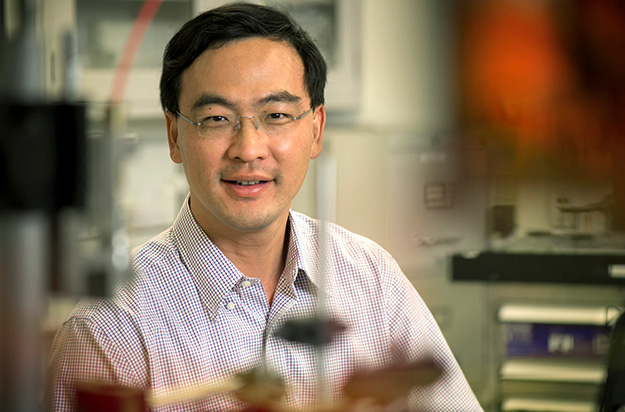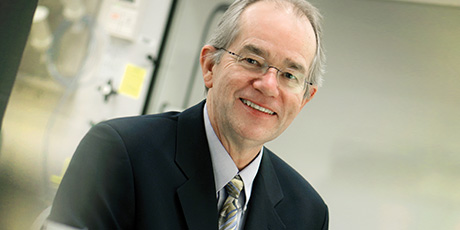Chipped
Laser Show
Engineer developing ultra-thin laser to boost efficiency in electronics

Weidong Zhou
In the electronics industry, size definitely matters. And Weidong Zhou's research is taking that maxim to the next level.
The electrical engineering professor is developing a new type of ultra-thin semiconductor laser, one that can be integrated—with increased capacity and energy-efficiency—into mainstream electronics on the same silicon substrate.
"Companies like IBM and Intel are using this technology for high-performance computing centers," says Dr. Zhou. "The big push now is for the next big thing: smaller, faster, and less and less power consumption."
The U.S. Army Research Office awarded a three-year, $600,000 grant to Zhou and co-principal investigator Yuze "Alice" Sun, an electrical engineering assistant professor, to build on advances already made in printed photonic crystals and silicon "lab-on-a-chip" technology.
Zhou's membrane laser is less than one micron thick and is compatible with planar Complementary Metal Oxide Silicon platforms, which are considered the building blocks for electronics because they can easily be integrated with current platforms. He believes that by incorporating certain compound semiconductor materials with a silicon photonic crystal cavity, a laser may be built directly on a silicon chip next to other electrical components, resulting in increased speed and efficiency.
"We are looking for devices and components to be integrated on a chip," Zhou says. "As we address electrical injection, integration with other devices on the chip, and increased power capabilities, we can begin to apply this technology to products in the medical field or the consumer arena."

















